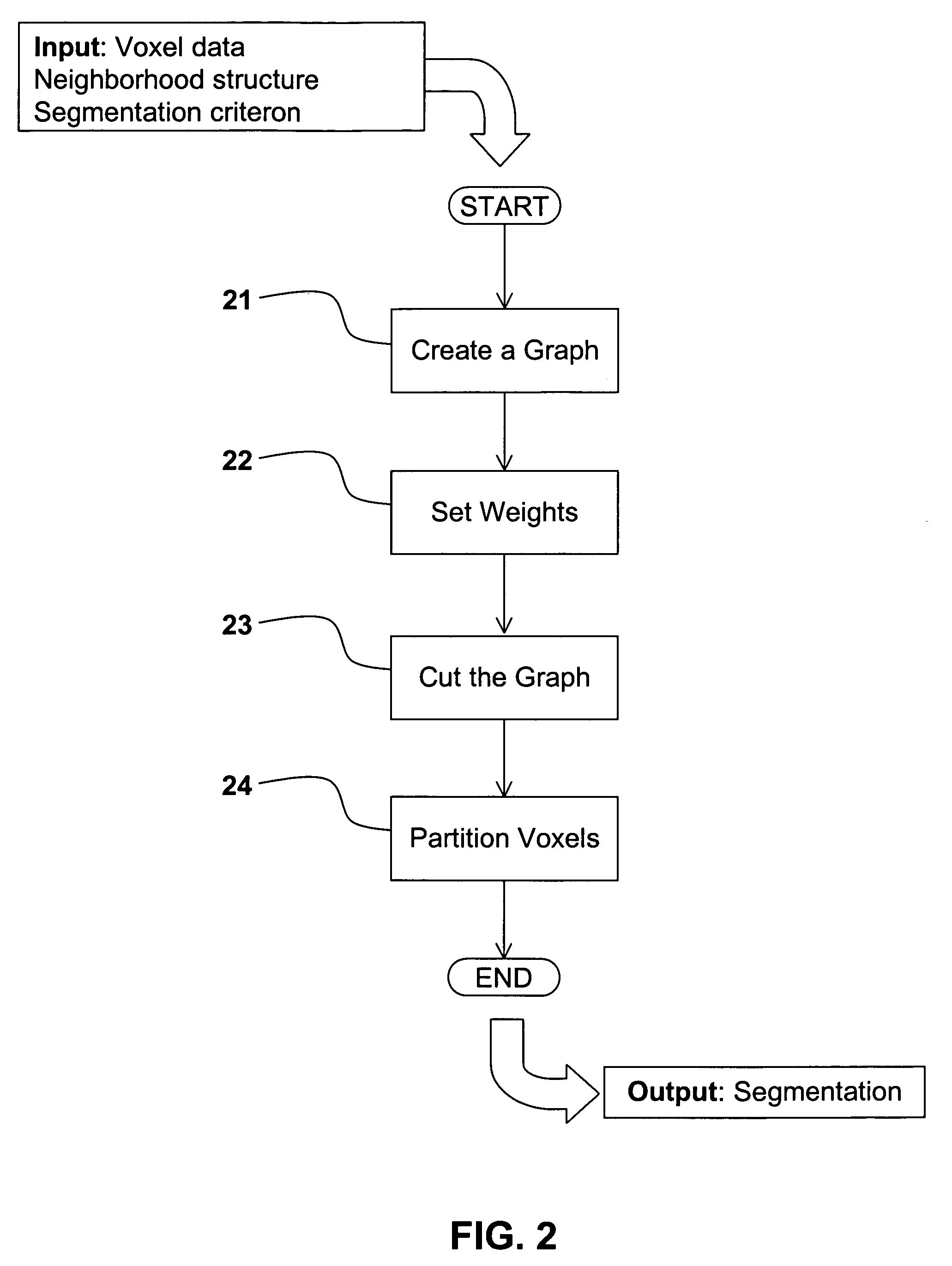Method and apparatus for segmenting an image in order to locate a part thereof
a technology of segmenting and image, applied in the field of segmenting images in order to locate parts thereof, can solve the problems of difficult to find bifurcating arteries, need to segment data samples, and easy noise of simple thresholding
- Summary
- Abstract
- Description
- Claims
- Application Information
AI Technical Summary
Benefits of technology
Problems solved by technology
Method used
Image
Examples
Embodiment Construction
General Description
[0027]Hereafter, the dimension of the input data is denoted by DIM. For three dimensions, DIM=3.
Input
[0028]In the segmentation problem that the present invention solves, a DIM-dimensional data structure stored in the memory of a computer system is given as the input to the method, which usually is realized as a computer program. In medical applications, the data is typically acquired by non-intrusive methods such as computed axial tomography (CAT) systems, by magnetic resonance imaging (MRI) systems, or by other non-intrusive mechanisms such as ultrasound, positron emission tomography (PET), emission computed tomography (ECT) and multi-modality imaging (MMI), and stored in the memory of a computer system. The data structure will be called an “image” hereafter, and comprises voxels and neighborhood structure:[0029]i. Each voxel has associated data, such as a number or a set of numbers (vector). Voxels are conceptually laid out in a DIM-dimensional configuration. Fo...
PUM
 Login to View More
Login to View More Abstract
Description
Claims
Application Information
 Login to View More
Login to View More - Generate Ideas
- Intellectual Property
- Life Sciences
- Materials
- Tech Scout
- Unparalleled Data Quality
- Higher Quality Content
- 60% Fewer Hallucinations
Browse by: Latest US Patents, China's latest patents, Technical Efficacy Thesaurus, Application Domain, Technology Topic, Popular Technical Reports.
© 2025 PatSnap. All rights reserved.Legal|Privacy policy|Modern Slavery Act Transparency Statement|Sitemap|About US| Contact US: help@patsnap.com



